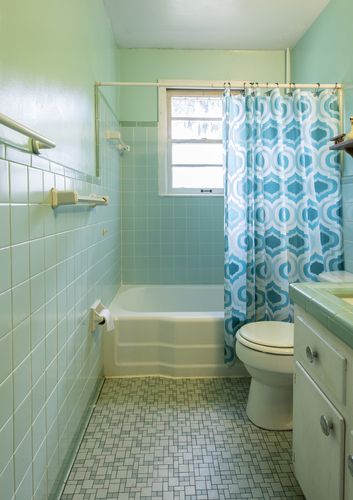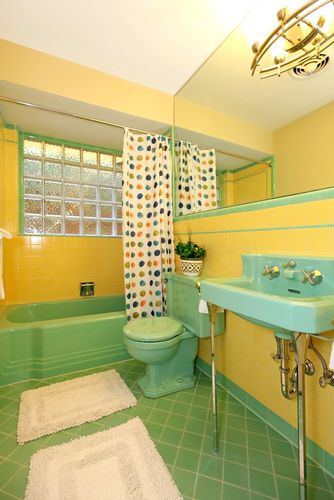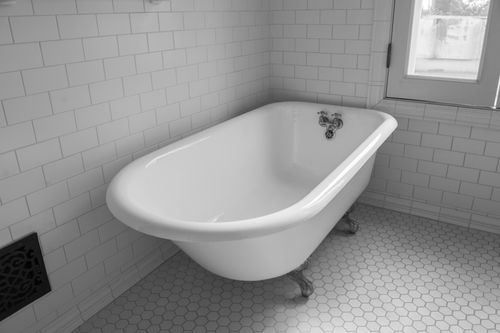Choosing tile that is true to your old house without looking dated can be tricky. In this article we've reviewed some old house bathroom tile trends that we'd love to see in your old house and some trends that would be more challenging to pull off. When choosing tile for your old house, keeping in mind the style and age of the house is key. It is important to consider the way you plan to use the space with modern features and amenities, as well as how your tile design will fair over time.


These bathrooms are great examples of designs that would have been popular in the 1940s through the 1970s. Bright colors, like baby blue, were a popular choice for bathrooms in the 1950s when people wanted to show off their prosperity. While we're not crazy about the look of 4"x4" square tile for updating a bathroom design, they can be used to create a "time-capsule" in a mid-century modern home. Tile can be used to either elevate a space to current design aesthetics or to lean into the the period and original style of the house.

Subway tile is a classic choice for any old house; it has been used since the late 1800s and continues to be popular today. Twists on traditional subway tile could be using tile with color or using different colored grout (think: dark gray grout with white subway tile). The burgundy border tile is not likely to make a comeback soon, but using tile with color is. We are seeing more clients ask for bathroom tile with color - particularly blues and pinks. In the picture, above, you'll see another classic tile for an older home - ceramic or porcelain hexagons. In this particular bathroom, periwinkle hexagons trace the outline of the floor for added interest.

(We would love to see this pink and white porcelain hexagon floor tile make a come back!)

Hexagons are a timeless shape that has gained in popularity in the past few years. Smaller hexagons are true to a house built at the turn of the century and into the 1930s. Most homes built during this time period would have ceramic or porcelain hexagon tile. More luxurious homes could have used hexagons made of marble or another stone. At the turn of the century, people became increasingly aware of germs and cleanliness, making white tile extremely desirable for it's ability to show any dirt on it's surface. To elevate your old house bathroom, you could combine a stone hexagon with a white subway tile, as shown in the photo, above. In a home built in the late 1880s through the 1930s, subway tile was frequently used on the walls of the bathroom up to a chair rail or (sometimes) to the ceiling. This look is not only trendy now, it was trendy then; and it is a timeless look that could easily be part of your old house for another century.

Black and white bathroom floor tile is iconic in older houses. Whether the floor tile is a square weave, pinwheel, hexagon, penny round or squares with inserts, a black and white tile floor is a safe bet if you're hoping to lean in to the style of your early 1900s home. Smaller tile was often used for floor tile in these homes because it was less likely to crack with the technology of substrate at the time. Today's substrate and tile laying processes can easily support larger floor tile, but to get the old house style, you may want to choose a smaller tile.

Here is an excellent example of black and white tile used to create a timeless bathroom design with elements of mid-century modern design. Using trendy industrial elements, like the extra large shower and matte black shower door, along with the mid-century modern elements, like the wall mounted sink with chrome legs, the round hanging mirror and 4x4 tile, all in black and white creates a classic look.
With the help of our tile designers, you won't go wrong in choosing to elevate your old house to today's tile trends or to lean in to the original style of your home. Choosing tile is one of the most impactful specifications in creating your bathroom design.
